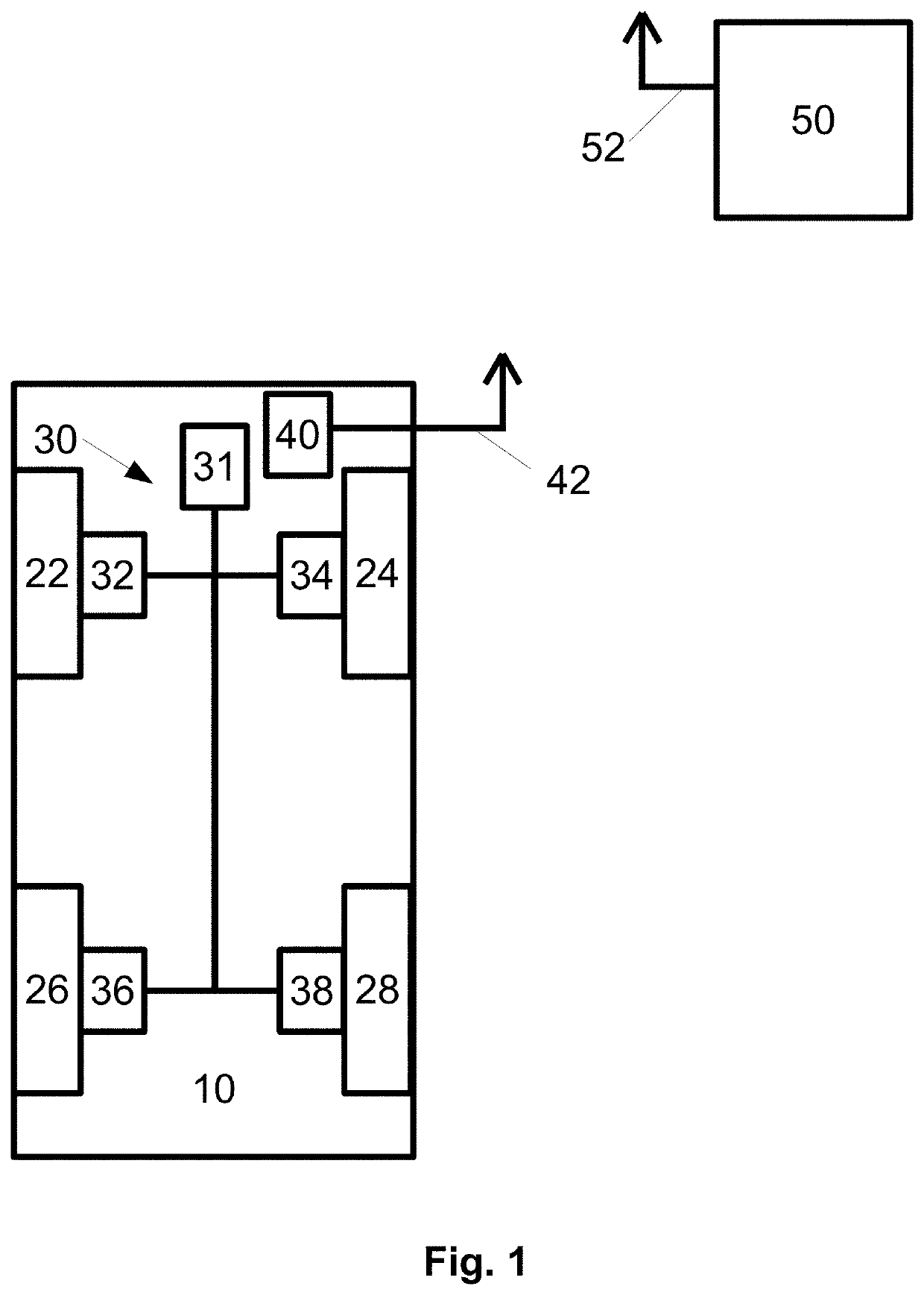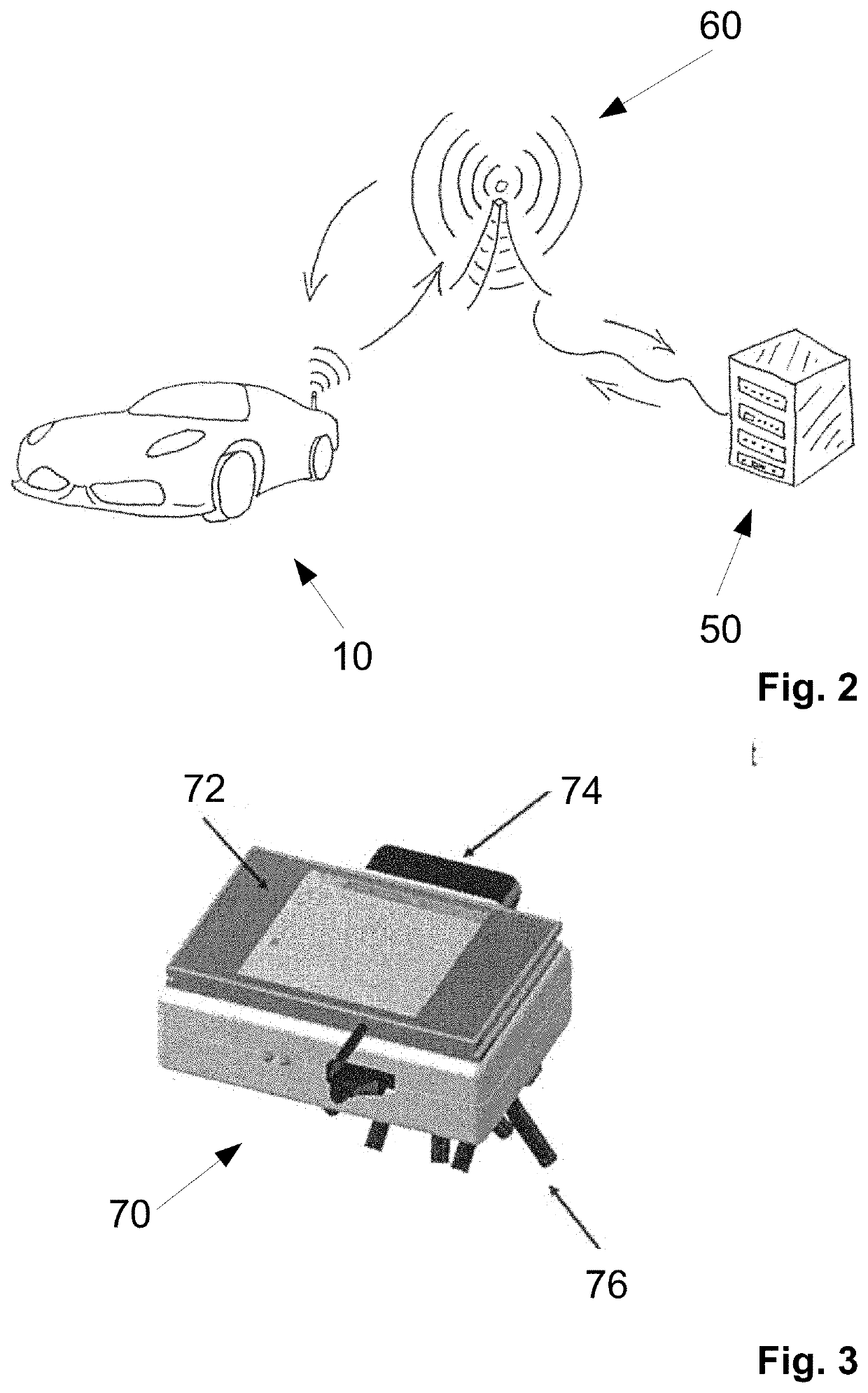Method for suppressing braking noise, central server, vehicle control module, and storage medium
a technology for reducing noise and braking, applied in the direction of braking systems, vehicle sub-unit features, instruments, etc., can solve the problems of not being able to respond in a flexible way to noise, perceived as unpleasant by vehicle occupants or even persons, and unable to occur braking noise, etc., to achieve more cost-effective products and respond flexibly
- Summary
- Abstract
- Description
- Claims
- Application Information
AI Technical Summary
Benefits of technology
Problems solved by technology
Method used
Image
Examples
Embodiment Construction
[0089]FIG. 1 shows a schematic diagram of a vehicle in the form of a motor vehicle 10 and a central server 50. These are each designed for carrying out methods according to an aspect of the invention in accordance with relevant exemplary embodiments.
[0090]The motor vehicle 10 has a left-hand front wheel 22, a right-hand front wheel 24, a left-hand rear wheel 26 and a right-hand rear wheel 28. The motor vehicle 10 also comprises a braking system 30. This has a central unit 31, which is designed to generate a braking pressure. This can be, for example, a hydraulic pump and / or a brake cylinder with an attached brake pedal. The braking system 30 further comprises a left front brake unit 32, a right front brake unit 34, a left rear brake unit 36 and a right rear brake unit 38. The brake units 32, 34, 36, 38 are each assigned to one of the wheels 22, 24, 26, 28 to decelerate the respective wheel.
[0091]The motor vehicle 10 also comprises a vehicle control module 40, which is connected to a...
PUM
 Login to View More
Login to View More Abstract
Description
Claims
Application Information
 Login to View More
Login to View More - R&D
- Intellectual Property
- Life Sciences
- Materials
- Tech Scout
- Unparalleled Data Quality
- Higher Quality Content
- 60% Fewer Hallucinations
Browse by: Latest US Patents, China's latest patents, Technical Efficacy Thesaurus, Application Domain, Technology Topic, Popular Technical Reports.
© 2025 PatSnap. All rights reserved.Legal|Privacy policy|Modern Slavery Act Transparency Statement|Sitemap|About US| Contact US: help@patsnap.com


